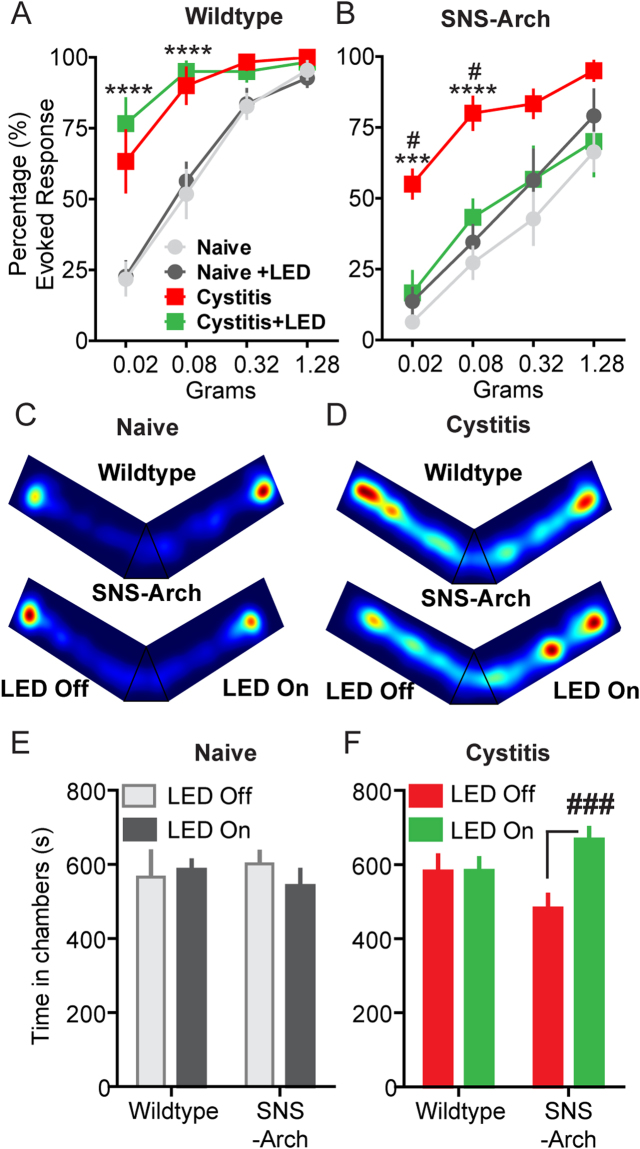Figure 6.
Optical silencing of nociceptive bladder afferents attenuates evoked and ongoing bladder nociception. Quantification of abdominal mechanical sensitivity, measured by counting evoked responses to a series of von Frey filaments with increasing force before and during CYP-induced cystitis. (A) In wild type mice, activation of wireless µ-ILEDs had no significant effect on evoked responses in the naïve state compared to their baseline values. CYP (200 mg/kg i.p.) resulted in a significant increase in abdominal sensitivity. Activation of the optoelectronic devices implanted over bladder had no effect on abdominal sensitivity after cystitis (****p < 0.0001 comparing naïve to post-CYP, F (3, 90) = 76.31, n = 11 mice per group, two-way ANOVA). (B) In SNS-Arch mice, activation of wireless µ-ILEDs had no significant effect on evoked responses in the naïve state compared to their baseline values. After cystitis induction, optical inhibition of nociceptive sensory afferents significantly attenuated the abdominal hypersensitivity to values comparable to that of the baseline sensitivity recorded before CYP treatment (#p < 0.05,***p = 0.0006, F (3, 30) = 7.596; ****p < 0.0001, F (3, 90) = 67.17, n = 11 mice per group, two-way ANOVA). (C and D) Representative heat maps displaying time spent each zone of the custom V-maze in naïve (C) and cystitis (D) mice. Red indicates areas where the animals spend a higher proportion of their time. (E) In naïve conditions (pre-CYP), both wild type and SNS-Arch mice did not exhibit any preference for either LED-ON or LED-OFF chamber (F1,8 = 0.21, p = 0.6606, n = 6 mice per group, two-way ANOVA). (F) After cystitis induction, SNS-Arch mice showed significant RTPP to the LED-ON arm compared to the LED-OFF arm, whereas wild type mice have no preference (F1,18 = 9.47, ###p = 0.0065, n = 11 mice per group, two-way ANOVA). Error bars indicate SEM.

